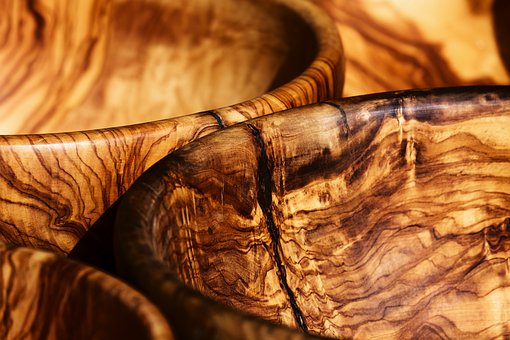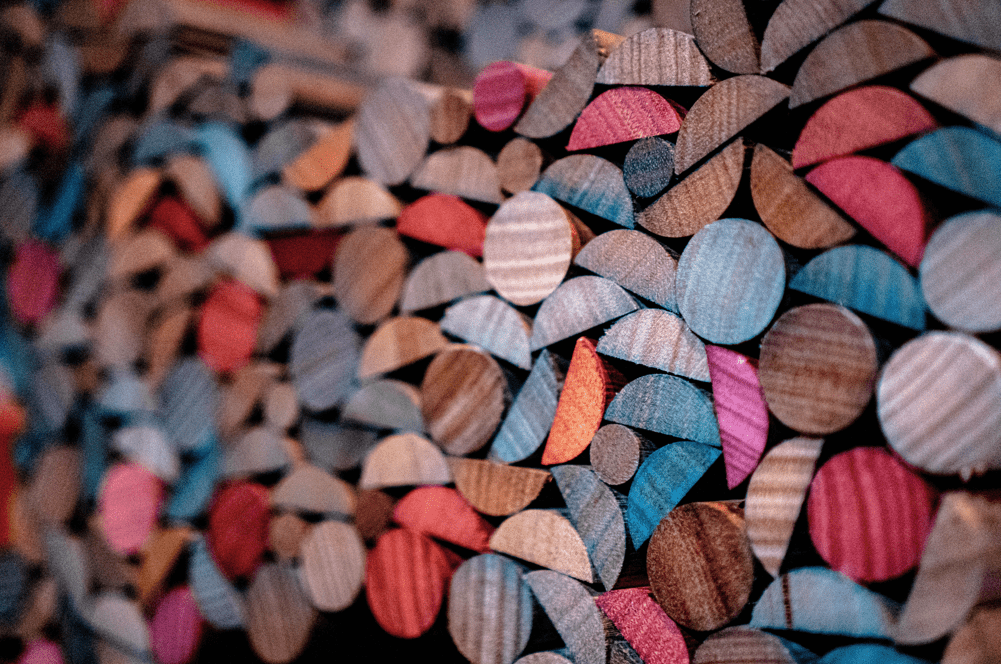Sealing Acrylic Paint on Wood: Step-by-Step Instructions for a Professional Finish
Hi there! My name is Alice and I'm an acrylic paint finishing specialist. If you're looking to seal your freshly painted wood with acrylic paint, you've come to the right place. Sealing your project properly can make all the difference when it comes to long-term durability and a high-quality finish. In this article, I'll be giving you my top tips for sealing acrylic paint on wood. It's not complicated but there are some key things to keep in mind if you want results that last. Let me show you how it's done!
The first step in getting a great seal is prepping your surface before painting. Whether it's new or previously finished wood, sanding down any rough edges will help create a smoother canvas for better adhesion of the acrylic paint. You'll also want to apply primer where needed before applying your base coat of paint - this helps ensure proper coverage and longevity of color over time.
Finally, once you have applied your desired layer(s) of acrylic paint, choose from one of several varieties of sealants available today depending on what kind of finish you prefer - glossy, satin, or matte finishes are all possible with different levels of sheen depending on your preference. With the right combination of preparation and sealant application techniques, you can achieve stunning results that will add beauty and protection to your painted wood surfaces for years to come!
Preparation And Cleaning
Preparing and cleaning the surface of the wood before sealing acrylic paint is an essential step to ensure a successful finish. It's important to begin by sanding down the area and removing any loose or chipped paint, dirt, grime, and other debris from the surface. This will help create a smooth base for your painting project. Once you've completed this process, use a cloth dampened with warm water and mild soap to clean the entire surface thoroughly. Be sure to get into all crevices and corners as well as around hardware or handles if they are present.
Once you have finished cleaning the wood preparation area, it is time to remove any remaining paint on the surface. You can do this by using either chemical-based strippers or traditional scraping methods; whichever works best for you depending on what type of wood you're working with and how much paint there is that needs removal. Make sure to wipe off any residual dust after stripping or sanding so that your sealed acrylic paint job looks its very best when complete! With the proper attention paid in advance to these details, you'll be ready to move on to priming the piece next.

Primer
Preparing the wood for painting is an absolute must if you want to achieve a perfect, professional look. To do this properly, you need to start priming your wood with acrylic primer before applying any type of acrylic paint. Not only will it help ensure that the colors come out vibrant and true to life, but it will also seal the surface so that your paint job lasts longer and looks great!
Acrylic primer is essential when sealing wood or other porous surfaces because it seals in the grains of the wood while protecting against moisture damage and staining. It helps create a barrier between the wood and the paint, ensuring that no water can seep through and cause discoloration or fading over time. Plus, it helps prevent chipping and peeling on wooden surfaces - something we all want to avoid!
For best results, use an acrylic paint primer specifically designed for exterior applications like decks or furniture. This kind of product contains special additives that make it more durable than regular interior primers; plus, they often dry faster as well! When using such products, always read and follow directions carefully to get maximum protection from weathering elements.
With proper preparation using quality materials, your painted wooden masterpiece should last for years without any issues.
Types Of Sealers
When it comes to sealing acrylic paint on wood, you have a few options. Depending on the type of look and finish you’re going for, different types of sealers can be used. The most common options include an acrylic sealer, wood sealer, or varnish sealer.
An acrylic sealer is best for interior surfaces and provides a protective layer without changing the appearance of the painted surface underneath. It also dries quickly and won't yellow over time. A wood sealer works well if you want to protect your project from moisture while giving it a glossy sheen at the same time. Varnish sealers provide added protection but may require more maintenance as they tend to dull over time with exposure to environmental elements like sun and rain.
No matter which type of sealant you choose, each serves its purpose in protecting your project from wear and tear while providing an attractive finish that will last for years to come. With so many varieties available today, finding one that suits your needs shouldn't be difficult! Now let's explore how to apply these various types of sealers properly for optimal results.

Application Process
Before you embark upon the journey of sealing acrylic paint on wood, let's take a trip down memory lane and remember that this is our chance to make something beautiful. With all the necessary materials in hand - which includes brushes, stirring sticks, coating material, and your trusty can of acrylic paint - it's time to get painting!
When applying the paint, be sure to brush it onto the surface evenly so as not to leave any streaks or patches. If you're looking for an even smoother finish, use a roller applicator instead. Once everything has been coated with paint, allow it to dry before proceeding with the next step.
Make sure to stir your coating material thoroughly before applying it; otherwise, it won't provide an adequate sealant layer over the painted area. For best results, apply two coats of coating material and wait at least five minutes between each coat.
This process may seem simple enough but don’t forget: proper preparation leads to great results! So don’t rush through it; rather take your time and enjoy creating something amazing - after all you deserve it! Now then, we just need to give this masterpiece some drying and curing time before we can truly call it complete.
Drying And Curing Time
Once you've applied the acrylic paint to your wood surface, it's time for drying and curing. Drying is when the liquid evaporates from the paint so that it doesn't stay wet or tacky. Curing is when the paint fully hardens and reaches its maximum strength level. It’s important to understand the difference between these two processes to properly seal your project with a good finish.
The drying process of an acrylic sealer can take anywhere from thirty minutes to several hours depending on how thickly it was applied and what type of temperature and humidity levels are present in your environment. During this period, it's best not to touch or move anything around until the sealer has had adequate time to dry completely.
Curing times will vary based on which kind of sealant you used, but typically takes about three days before you'll get a durable result. To speed up this process, make sure the area where you're working is well-ventilated and at room temperature. You may also want to use a fan or heat gun if necessary. This will help ensure that your sealer dries evenly without any sticky residue left behind. So be sure to allow plenty of time for both drying and curing before proceeding with your project!

Troubleshooting Tips
As an acrylic paint finishing specialist, I've seen lots of sticking problems when applying the sealant on the wood. If you don't sand and prepare your surface properly before sealing it can cause cracking issues in the future. Fading colors is another common problem with not using a good quality sealer.
It's important to make sure that you apply enough coats of sealant so that there won't be any sealing problems. Blotchy patches can occur if you don't use even strokes while brushing or rolling on the sealant. Make sure to always test out your brush technique on scrap wood first before applying it to the main project.
To ensure a successful outcome for all projects, take your time and pay attention to detail as this is key for preventing any potential mistakes from happening down the line.
With these tips in mind, you'll have all the tools necessary to fix any troubleshooting issues that may arise with acrylic paint on wood surfaces.
Maintenance
The beauty of acrylic paint lies in its ability to transform a wood surface, but the challenge is in maintaining that transformation. To ensure your painted wood surfaces remain vibrant and protected from wear and tear, it's important to regularly clean them with soap and water. Additionally, an appropriate sealer should be applied to protect the finish; this will help keep the colors bright and prevent dirt or dust from settling on top of the paint job.
It's also important to note that sealing acrylic finishes can require more frequent upkeep than regular cleaning. The sealer needs to be reapplied occasionally, especially if you are using a matte finish which may dull over time. This is because certain types of sealers tend to break down easily when exposed to sunlight or moisture. When applying new layers of sealer, make sure you follow all directions carefully as not doing so could lead to uneven coverage or discoloration.
To achieve optimal protection for your acrylic paint job, consider investing in high-quality products specifically designed for use on wooden surfaces. Look for ones that contain ingredients such as polyurethane or epoxy resins which create durable barriers against damage caused by UV rays, temperature fluctuations, moisture buildup, and other environmental conditions. With proper maintenance and care, your finished project will stay looking beautiful for years to come!

Frequently Asked Questions
When it comes to finishing a wood surface with acrylic paint, the drying time of the sealer after the application is an important step. To ensure that the paint adheres properly and looks its best for years to come, you must allow your sealer enough time to dry completely before applying any acrylic paint. Here are four essential steps when sealing a wood surface with acrylic paint:
- Wood Preparation – Cleaning the wood surface of dust, dirt, and other debris will help create an ideal foundation for the sealer and acrylic paint.
- Sealer Application – Apply one or two coats of sealer according to manufacturer instructions using either a brush or roller applicator. Allow ample drying time between each coat as recommended by product instructions (generally 1-3 hours).
- Sealer Drying Time – Once all coats have been applied, wait at least 24 hours for the sealant to fully cure before moving on to painting with acrylic paints.
- Acrylic Paint Application – Now that the sealed wooden surface has had sufficient time to set and dry, you can go ahead and apply your acrylic paints following manufacturer instructions such as thinning out with water if needed before use. This part of the process should be done quite quickly so that no air bubbles form in the layers of paint being applied.
So make sure you plan when sealing a wood surface with acrylic paints—allow plenty of drying time for both sealers and paints! That way you won’t have issues down the line caused by improper curing times due to rushing through this stage of your project.
When it comes to maintaining the look of your acrylic paint on wood, there’s no escaping the need for regular upkeep and maintenance. It’s like a never-ending cycle – you seal it with an acrylic sealer, wait for it to dry, apply the paint… and then start all over again! This is why proper wood care is essential if you want your project to remain to look its best.
The frequency of wood maintenance will depend entirely on how often you use or move around the item that has been painted. If something gets used daily or dented regularly, chances are the seals may not last long and require reapplication sooner than anticipated. For items that don’t get moved much however, such as table legs or picture frames, a good rule of thumb would be to check up on them every few months – just in case any cracks have started appearing in the sealant maintenance.
It’s worth remembering that even though re-sealing isn’t required too often (like once every six months), ensuring that any chips in the paint are freshened up quickly can make all the difference between having pristine results versus a mediocre finish. As a professional acrylic paint finisher, I highly recommend always keeping some extra cans of acrylic sealer handy so you’re ready when needed – trust me; it’ll save you time and energy down the line!
When it comes to sealing acrylic paint on wood, the type of brush or roller used is essential. After all, a sealer applicator brush and a wood sealer roller will ensure that the sealant adheres properly and creates an even finish. So, what kind of brush or roller should you use?
The answer depends on your preferences; however, certain types of brushes and rollers work best for applying sealants. For example, when using an acrylic sealer brush to apply the coating, be sure to choose one with soft bristles so it doesn’t scratch the surface of the wood. And if you prefer a smoother finish, then consider using a foam-tipped applicator instead. On the other hand, if you opt for a paint sealer roller application method, make sure to select one with a short nap length to avoid creating an uneven texture.
No matter which option you choose, bear in mind that proper preparation is key – cleaning off any dust or debris beforehand will help ensure that your sealed wood has long-lasting protection against moisture and wear and tear over time. Ultimately, selecting the right tool for each job is essential to achieving professional results with ease!
When prepping wood for painting with acrylics, it is important to make sure the surface is clean and free of dirt, dust, or oils. Cleaning the wood before painting will help ensure that your finished project looks professional and has a durable finish. As an acrylic paint finishing specialist, here are my top tips on how to best clean painted wood:
- Make sure you start by removing any existing paint layers from the surface using sandpaper or chemical strippers.
- Use a damp cloth to wipe away dirt and debris from the wood. Be sure not to use too much water as this may cause warping in some woods.
- For tougher stains such as grease or oil-based products, try using mineral spirits or denatured alcohol to remove them.
These cleaning techniques should be used when preparing wood for painting whether you’re starting from scratch with raw timber or working with already painted surfaces. It’s also worthwhile taking extra time to prepare more intricate details like ornate carvings which require careful attention when sanding down previous coats of paint – after all, these small touches can make a difference in the overall look of your projects!
No matter what type of wood you’re working with, proper preparation is key when it comes to achieving lasting results with acrylic paints. Taking care of each step of the process will enable you to create beautiful pieces that stand out and last long into the future.
When it comes to painting with acrylics on wood, there are a few things you need to consider. First and foremost is the type of wood you use for your project – this will determine how well the paint adheres and the overall finish appearance. Different types of wood have different characteristics that lend themselves better to certain painting techniques and finishes, so it’s important to choose the right one for your needs. In this article, we’ll discuss some of the best woods for acrylic painting and provide tips on how to select an appropriate type for your project.
Wood painting techniques vary depending on what kind of look you’re going for, but all require proper preparation before starting. You should always start by sanding down any rough spots or uneven surfaces then clean off the dust using a damp cloth or vacuum cleaner attachment. It’s also important to seal any knots or cracks to prevent moisture from penetrating them which can lead to bubbling or lifting of the paint over time. Acrylic paints adhere better when applied directly onto primed wood as opposed to raw material, so make sure you give yourself plenty of time beforehand if this is necessary.
Several types of wood are suited for acrylic painting including oak, pine, cherry, and birch among others. Oak has a strong grain pattern that looks great with painted designs; pine is lightweight yet durable making it ideal for furniture projects; cherry provides a smooth surface that makes applying even coats easier; lastly, birch offers natural color variation which adds depth when used with contrasting colors. Each type requires its unique setup process before beginning work such as conditioning, staining, or priming depending on what look you’re trying to achieve so be sure to do research before starting!
No matter what type of wood you decide upon for your next project, it pays dividends in terms of quality craftsmanship and longevity when taking extra care during preparation steps like sealing knots and ensuring smooth surfaces before applying paint layers. A little bit of effort goes a long way toward giving your finished product an impressive professional-grade finish that stands out from all other DIY projects!
Conclusion
As an acrylic paint finishing specialist, I’ve seen so many creative projects come to life with the use of wood and acrylic paints. The technique is simple when you know how - first clean the wood surface, then apply a sealer to protect it from damage. Once the sealer has dried, you can start painting your masterpiece!
Using quality materials makes all the difference in achieving beautiful results. A good brush or roller will ensure even coverage of the sealer. Don't forget that maintenance is key; if done correctly, your painted piece should last for years without needing any repairs or touch-ups.
It's important to remember that sealing your wood before using acrylic paint is essential for long-lasting protection and beauty. With some basic knowledge and practice, anyone can easily master this skill and create amazing art pieces with confidence. So what are you waiting for? Get started on that project today!






